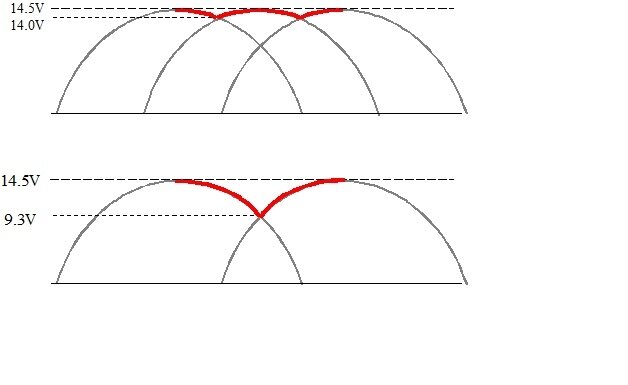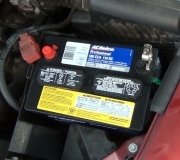Stop removing the battery cable with the engine running! That was a trick done decades ago by mechanics who didn't understand how these simple systems work or how to diagnose them. It is an extremely easy way to destroy multiple computers on the vehicle. If that didn't happen here, it is likely the generator is defective.
To add to the frustration, if a battery cable is removed, on about 50 percent of vehicles, the engine will stall even though the generator is perfectly fine. On another 50 percent, it is possible for the engine to remain running even though the generator is defective., so that "test" means nothing.
In my opinion, GM had the world's second-best generator design on 1986 and older models. For 1987 and newer models, they have by a huge margin the worst design imaginable, with no intent to improve it. Due to their design, they develop huge, harmful voltage spikes that can destroy the internal voltage regulator or internal diodes, and they can interfere with delicate sensor signals. The key component in damping and absorbing those spikes is the battery. As they age, and the lead flakes off the plates, the battery gradually loses its ability to do that. For that reason, when the generator needs to be replaced, it is very common for your mechanic to want to replace the battery at the same time, unless it's less than about two years old. When competent do-it-yourselfers replace the generator, they aren't aware of the need to replace the battery, (which can still work fine in a 1986 or older model), so they keep getting repeat generator failures. It used to be common to go through four to six generators in the life of the car.
The proper way to test the charging system is with a professional load tester, but few of us have access to them. You can start the testing with a simple, inexpensive digital voltmeter. Harbor Freight Tools has a perfectly fine one for seven bucks. If you aren't familiar with how to use one or set it up, I can help with that.
Here's links to some related articles:
https://www.2carpros.com/articles/how-to-use-a-voltmeter
https://www.2carpros.com/articles/how-to-check-a-car-alternator
In the first article, they're using an "auto-ranging" voltmeter. That is an expensive function found on high-end meters that you don't need. That's why there can be some confusion in setting up and reading the less-expensive standard meters. Let me know if you need help with yours.
The first test is to measure the battery voltage with the engine off. A good, fully-charged battery will measure 12.6 volts. If you find it's closer to 12.2 volts, it's good but fully discharged. Charge it at a slow rate for a few hours with a small portable charger. If it's around 11.0 volts or less, it has a shorted cell and must be replaced.
Next, measure the battery voltage again with the engine running. Now it must be between 13.75 to 14.75 volts. If the voltage stays near 12.6 volts or less, the charging system is not working. If you find it is within the acceptable range, that just means it is okay to perform the rest of the tests, but that's when you need the professional load tester. During that test, your mechanic will measure "full-load output current", charging system voltage, and "ripple" voltage. The largest generator used on your model was rated at 90 amps. During the full-load output current test, the result is going to be very close to 90 amps, 0 amps, or close to exactly one third of that, or 30 amps. There are always at least six "diodes" in an AC generator. Two are used for each of the three phases. Three phase output is used because it's very stable and efficient. When one diode fails, which is very common in 1987 and newer GM generators, you'll lose one phase and two-thirds of the current generating capacity. That's when the 30 amps shows up on the tester. 30 amps can keep the engine running, but it is rarely enough to meet the demands of the entire electrical system. The battery has to make up the difference as it slowly runs down over days or weeks. It sounds like this may be what's happening here. After the battery sits for a while after the engine stalls, there is time for the few electrons still stored in the plates of the battery to move around, allowing the battery to start the engine one or two more times.
When one of the internal diodes fails, you lose one of the three output phases. During the time that phase was supposed to be there, output voltage drops considerably. That low, compared to the normal higher voltage, is "ripple" voltage. There are a few testers that actually assign a value, or measure that voltage. Those testers can make a paper printout of the results. The majority of load testers simply show ripple voltage as "low" or "high" on a relative bar chart with a series of lights. We have to observe the lights during the brief test, then write the results on the back of the repair order. There's no actual voltage to report.
When we see high ripple voltage, along with, in this case, around 30 amps as the most we can make the generator deliver, we know it has a defective diode. Due to the time it can take to replace a diode, or more commonly a block of diodes, it is a hugely better value for you that we replace the entire generator with a rebuilt one with a warranty. Even worse, due to GM's design, it is almost impossible to disassemble their generators without damaging other parts. The thin, flimsy tabs on the diode block usually break off rendering the entire diode block worthless, and once you do get everything apart, there's no way to test the voltage regulator. It can also be responsible for the dead charging system. Given the difficulty in disassembly, you're going to replace that regulator too. There are rebuild kits available at many farm and home stores that include all these parts, plus the bearings that have a known failure history, but they typically cost more than twice as much as for a Ford or Chrysler product, and you'll have hours involved that again, turn it into not a good value.
Start with the charging voltage test I described. If you find system voltage stays near 12.6 volts or less, don't assume the generator is defective, yet. You already shared the first step in the diagnosis, that being the "Battery" light was on. That circuit is the start-up circuit that turns on the generator's internal voltage regulator to get it up and running. There's a few more easy things we can do before we decide to replace the generator.
Let me know what you find with these tests.
In my sad drawings below, the top graph shows normal voltage, and therefore current output. The three gray curved lines represent the voltage developed by the three circuits, or phases, in the generator. The red line on top is what you would see at the generator's output stud, and at the battery. The difference between 14.0 and 14.5 volts is the ripple voltage, which here is very low.
In the lower drawing, one of the three phases is missing. Ripple voltage is 5.2 volts which is very high. That's our clue that a diode has failed.
Image (Click to make bigger)
Saturday, November 25th, 2023 AT 4:33 PM


